Gout
Overview
Gout is a type of arthritis characterized by sudden and severe attacks of pain, swelling, redness, and tenderness in the joints, most commonly in the big toe. It is caused by the buildup of uric acid crystals in the joints, leading to inflammation and intense pain. Gout is considered a metabolic disorder and is sometimes referred to as "gouty arthritis."
Signs and Symptoms of Gout
The signs and symptoms of gout can vary in intensity and may include:
Sudden and Severe Joint Pain: Typically, the pain comes on rapidly, often during the night or early morning. The pain is usually most intense within the first 12-24 hours and can be excruciating.
Joint Swelling: The affected joint becomes swollen, red, and warm to the touch.
Limited Joint Mobility: Due to the pain and swelling, it may be difficult to move the joint.
Tophi: Over time, uric acid crystals can form hard, painless lumps (tophi) beneath the skin around the joints or in other soft tissues.
Recurrent Attacks: Gout tends to occur in recurrent episodes, with symptom-free intervals between attacks. Over time, these attacks can become more frequent and affect multiple joints.
Kidney Stones: High levels of uric acid can lead to the formation of kidney stones, which can cause severe pain and urinary problems.
Treatment of Gout
The treatment of gout aims to relieve symptoms, reduce the frequency and severity of attacks, and prevent complications such as joint damage and kidney stones. Treatment strategies include:
Medications
Nonsteroidal Anti-Inflammatory Drugs (NSAIDs): NSAIDs like ibuprofen and naproxen can help relieve pain and reduce inflammation during a gout attack.
Colchicine: Colchicine is an anti-inflammatory medication that can be used to relieve gout symptoms. It is often prescribed at the onset of a gout attack.
Corticosteroids: Oral or injected corticosteroids can be used to reduce inflammation and pain during acute gout attacks.
Urate-Lowering Medications: These medications, such as allopurinol or febuxostat, are used to lower uric acid levels in the blood and prevent future gout attacks. They are typically taken daily.
Lifestyle Changes
Dietary Modifications: Limiting the intake of purine-rich foods (e.g., red meat, organ meats, seafood) and alcohol can help reduce uric acid levels.
Weight Management: Maintaining a healthy weight can lower the risk of gout.
Hydration: Staying well-hydrated can help prevent uric acid crystal formation.
Alcohol Restriction: Reducing or eliminating alcohol consumption, especially beer and liquor, can help prevent gout attacks.
Rest: During a gout attack, resting the affected joint can help reduce pain and inflammation.
Joint Aspiration: In some cases, a healthcare provider may use a needle to withdraw fluid from the affected joint to relieve pain and analyze the fluid for uric acid crystals.
Tophi Removal: If tophi develop and cause pain or discomfort, they can be surgically removed.
Regular Monitoring: People with gout should have their uric acid levels monitored regularly and adjust their medication as needed.
It's important for individuals with gout to work closely with their healthcare provider to manage the condition effectively. Untreated or poorly managed gout can lead to more frequent and severe attacks, joint damage, and kidney stones. With proper treatment and lifestyle modifications, gout can be managed, and the frequency of attacks can be reduced, allowing individuals to lead a more comfortable and active life.
